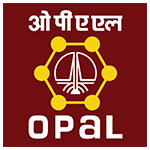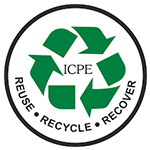Be a responsible Plastic User
DO's
- Stuff multiple plastic bags into one to prevent them from flying away and causing litter or clogging the recycling machinery
- Upcycle - Think of new uses for old items rather than discarding them or buying new ones Say "No straw, please." Straws are one of the top 10 items found on beaches. In most cases, drinking out of a straw is simply unnecessary
- Rinse all containers until they’re spotless -like plastic juice/milk jugs, yogurt containers, sour cream containers, etc
- Check if there are local options for recycling other types of glass, plastic or other materials that aren’t commonly recycled, but could be in your area. Every place is different.
- Throw out the small lids on plastic bottles – some municipalities accept these lids so be sure to check beforehand
- If you’re creative or know someone who is there are cool reuse projects where you can repurpose these bottles/containers into something awesome!
DON'Ts
- DON’T toss a bag full of random recyclable items into the recycling cart. That’s the easiest way to slow down recycling centers. The workers at the recycling facility can’t see what’s inside the bag to easily sort them. Empty the bag into the recycling cart instead
- Throw plastic shopping bags in with the recycling plastic bags can always be reused and there are other options like reusable cloth bags.
- Toss every plastic container in the recycling bin. A lot of places DO NOT accept plastics numbered three, six, and seven, but be sure to double check as some municipalities accept all types of plastic.
How to Recycle Plastic Bags?
Most plastic bags are made from high-density polyethylene (#2 plastic), but the thinner-material bags (such as produce bags) are made from low-density polyethylene (#4 plastic).
Plastic Bag Recycling Preparation
Remove anything inside the bags, such as receipts, stickers or crumbs. All these items will contaminate your bag load.
Keep a bag collection bin in your house, such as one big garbage bag for all bags. Since they compact easily, you should be able to fit 50 to 100 plastic bags in one garbage bag
Make sure any bags you are recycling have a #2 or #4 plastic symbol on them. If not, you can’t be sure what plastic resin the bag is made from, so you’ll want to reuse it instead, before eventually throwing it away
Why Recycle Plastic Bags
Plastic bags are among the most common sources of marine debris, where they can be mistaken as food by birds and fish
Plastic bags don’t biodegrade, meaning it will take hundreds of years for them to decompose in a landfill Recycling a ton of plastic bags (about 450,000 bags) saves 11 barrels of oil
How to Recycle Plastic Caps & Lids
Plastic caps & lids are made of a different plastic resin than the bottle or jug they secure. Most caps are made of polypropylene (#5 plastic), with some (like sports drink bottles) composed of high-density polyethylene (#2 plastic). Plastic bottles and jugs are typically #1 or #2 plastic. Plastic Cap & Lid Recycling Preparation
For plastic bottles, you need to ask your local recycling program whether caps are accepted before trying to recycle them with the bottle. Some will ask you to leave them on, some accept caps but want them separated, and some will ask you to throw them away.
For plastic containers (e.g. butter tubs, yogurt cartons), the lid is usually made of the same material as the base. If the container is #5 plastic, odds are strong that the lid is as well. In these cases, feel free to reattach the lid before recycling if your program accepts non-bottle plastics.
How to Recycle Plastic Bottles & Jugs
Most bottles and jugs are #1 plastic (PET) or #2 plastic (HDPE), which are both accepted by most curbside recycling programs. Plastic Bottle and Jug Recycling Preparation
Most recycling programs ask that you rinse your bottles and jugs before recycling. The remnants often contain sugar, which will attract insects and generate odors.
You’ll want to check with your local program whether to keep caps on the bottles, or whether caps are accepted at all. Some programs want the cap on to prevent loose caps from falling out during transportation. Others want the cap off to ensure the bottle is empty and because their recycling machinery may be damaged when trying to crush a capped bottle.
You should be OK leaving the label on the bottle, but it’s unlikely to be recycled since it’s a low-grade quality of paper or plastic.
Why Recycle Plastic Bottles and Jugs
Plastic bottles are among the most common sources of marine debris, where they can be mistaken as food by birds and fish
Plastic bottles don’t biodegrade, meaning it will take hundreds of years for them to decompose in a landfill
Using recycled plastic to make new products saves 66 percent of the energy over using virgin material
Why does some recycling program accept plastic bottles but not plastic food containers?
Plastic bottles are manufactured using a process called blow molding, which allows them more rigidity. Plastic containers (anything without a “neck”) are manufactured by injection molding, which creates a very stable product. While this means you’re more likely to reuse a plastic container to store leftovers than a bottle, one of the first steps in plastic recycling is to crush and bale the material.
If you try to crush a yogurt container or butter tub, it will crack and be difficult to bale. If you don’t crush these containers, they will cost as “air weight” when they are transferred to the plastic recycler.
 PET (Polyethylene terephthalate) - soft drink and fruit juice bottles
PET (Polyethylene terephthalate) - soft drink and fruit juice bottles HDPE (High-density polyethylene) - milk bottles or shampoo containers
HDPE (High-density polyethylene) - milk bottles or shampoo containers PVC (Polyvinyl chloride or plasticised polyvinyl chloride)- cordial, juice or squeeze bottles
PVC (Polyvinyl chloride or plasticised polyvinyl chloride)- cordial, juice or squeeze bottles LDPE (Low density polyethylene) – garbage bags and bins
LDPE (Low density polyethylene) – garbage bags and bins PP (Polypropylene) – ice cream containers, take-away food containers and lunch boxes
PP (Polypropylene) – ice cream containers, take-away food containers and lunch boxes PS (Polystyrene) – yoghurt containers, plastic cutlery, foam hot drink cups
PS (Polystyrene) – yoghurt containers, plastic cutlery, foam hot drink cups Other – all other plastics, including acrylic and nylon
Other – all other plastics, including acrylic and nylon



